STEINBECK, JOHN. 1902-1968. Typed Manuscript with Annotations, "El Camion Vacilador / Creditos por John Steinbeck / Historia para la pantalla por John Steinbeck y Jack Wagner" ["y John Wagner" crossed out, and rewritten as "Jack Wagner" in Steinbeck's hand], in Spanish, 4 pp, 4to, n.p., [1945], carbon copy on onion skin, pages brittle, 3 inch tear at upper left corner of p 1, all pages browned at extremities, upper corners bumped, creased.
While in Mexico during the spring and summer of 1945, Steinbeck turned his attention to a "Mexican story" which had been percolating for some time. Originally conceived as a short story, it grew in his mind to a short novel, then to a very substantial novel. "He called it at the beginning 'El Camion Vacilador, (which he later translated—only approximately—into 'The Wayward Bus'), and he wrote the original synopsis in Spanish, thinking that he would publish the short story in Mexico" (Benson p 569).
The manuscript opens: "este es un resumen de la historia para una pelicula que leevara el titulo arriba citado [This is a summary of the story for a movie that will carry the title mentioned above]."
This version features a 20-point outline that introduces Juan Chicoy, the main character, whom Steinbeck describes as both a responsible truck owner and very philosophical. The other characters are "Tres turistas americanos," Mr. and Mrs. Pitchard (Pritchard in the published version) and their daughter Mildred (who has studied Spanish in school) from Salinas, CA on a journey by bus; a prisoner and his guard (who is also a friend) who only handcuffs the former when women are looking; a woman who during the course of the journey falls in love with the prisoner; a stubborn, selfish and antisocial pig and its owner; a provincial doctor and his rival, a healer; and many more. This early outline/synopsis is quite different from the final version, as one might expect. The story is set in Mexico with tourists from Salinas, but by the time Steinbeck began seriously composing his longer novel in late 1946, he had moved the story to the Salinas setting and reimagined the characters. However, the seed of the idea about an epic, life-changing bus journey is present here.
STEINBECK, JOHN. 1902-1968. Typed Manuscript with Annotations, "El Camion Vacilador / Creditos por John Steinbeck / Historia para la pantalla por John Steinbeck y Jack Wagner" ["y John Wagner" crossed out, and rewritten as "Jack Wagner" in Steinbeck's hand], in Spanish, 4 pp, 4to, n.p., [1945], carbon copy on onion skin, pages brittle, 3 inch tear at upper left corner of p 1, all pages browned at extremities, upper corners bumped, creased.
While in Mexico during the spring and summer of 1945, Steinbeck turned his attention to a "Mexican story" which had been percolating for some time. Originally conceived as a short story, it grew in his mind to a short novel, then to a very substantial novel. "He called it at the beginning 'El Camion Vacilador, (which he later translated—only approximately—into 'The Wayward Bus'), and he wrote the original synopsis in Spanish, thinking that he would publish the short story in Mexico" (Benson p 569).
The manuscript opens: "este es un resumen de la historia para una pelicula que leevara el titulo arriba citado [This is a summary of the story for a movie that will carry the title mentioned above]."
This version features a 20-point outline that introduces Juan Chicoy, the main character, whom Steinbeck describes as both a responsible truck owner and very philosophical. The other characters are "Tres turistas americanos," Mr. and Mrs. Pitchard (Pritchard in the published version) and their daughter Mildred (who has studied Spanish in school) from Salinas, CA on a journey by bus; a prisoner and his guard (who is also a friend) who only handcuffs the former when women are looking; a woman who during the course of the journey falls in love with the prisoner; a stubborn, selfish and antisocial pig and its owner; a provincial doctor and his rival, a healer; and many more. This early outline/synopsis is quite different from the final version, as one might expect. The story is set in Mexico with tourists from Salinas, but by the time Steinbeck began seriously composing his longer novel in late 1946, he had moved the story to the Salinas setting and reimagined the characters. However, the seed of the idea about an epic, life-changing bus journey is present here.


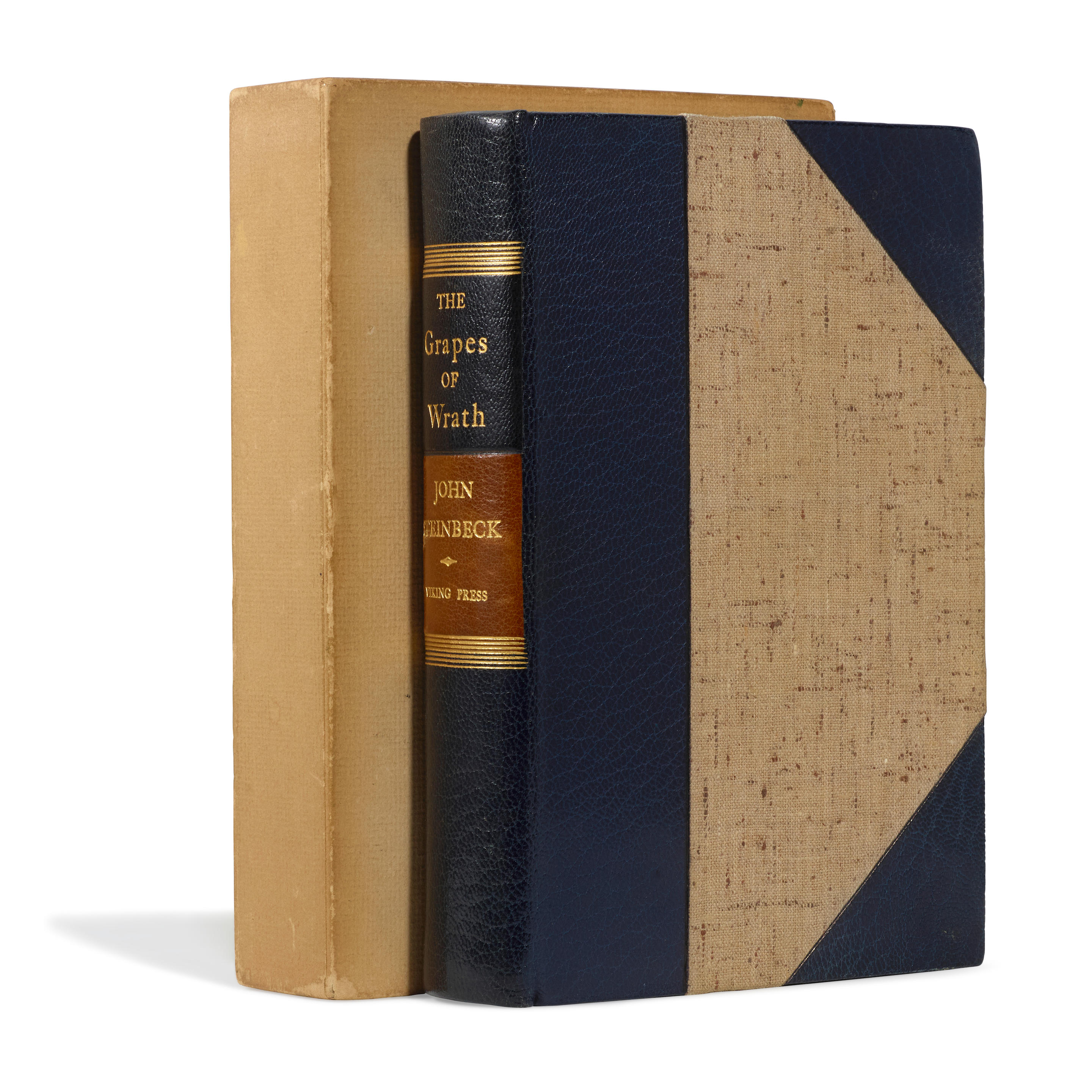


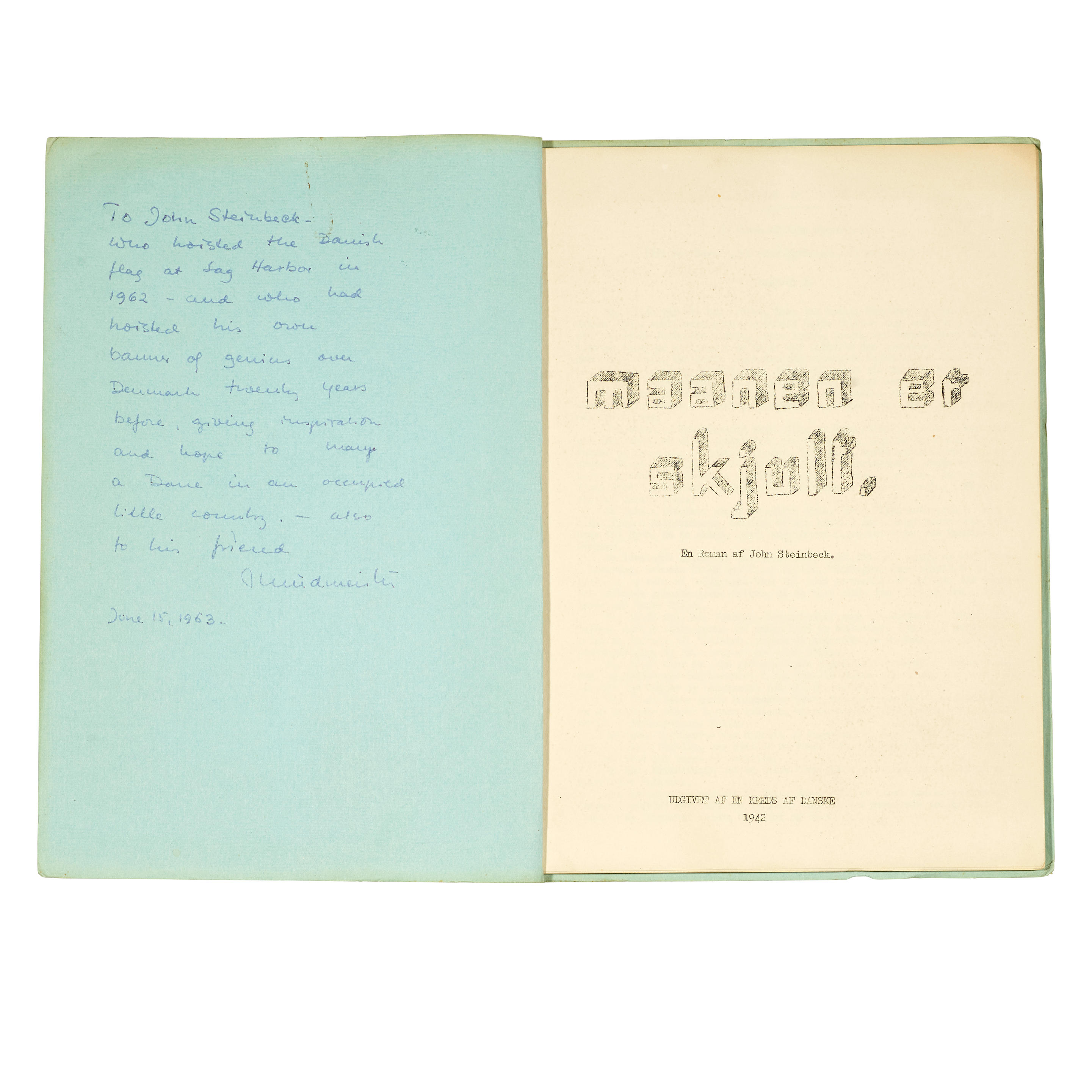
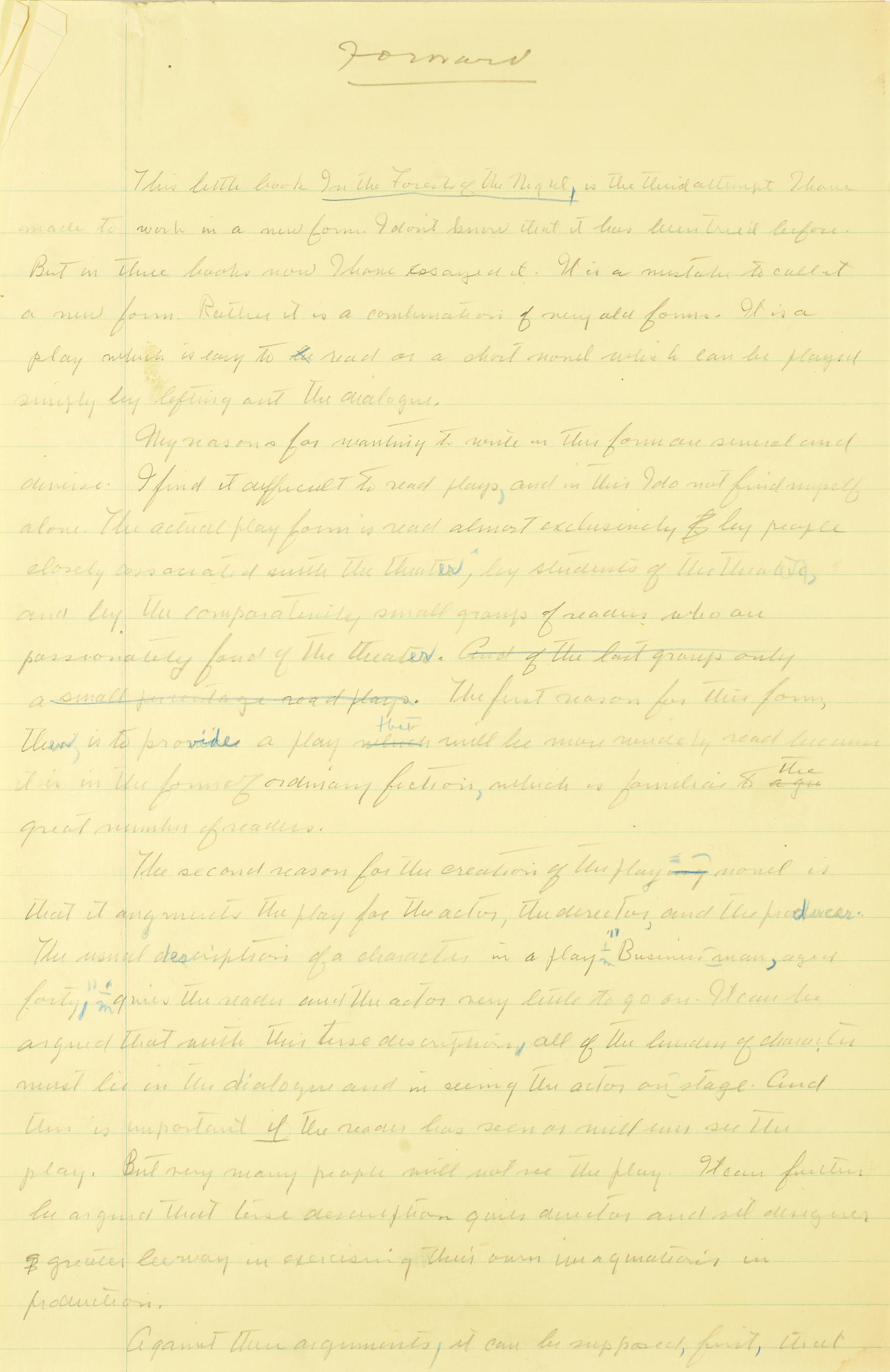
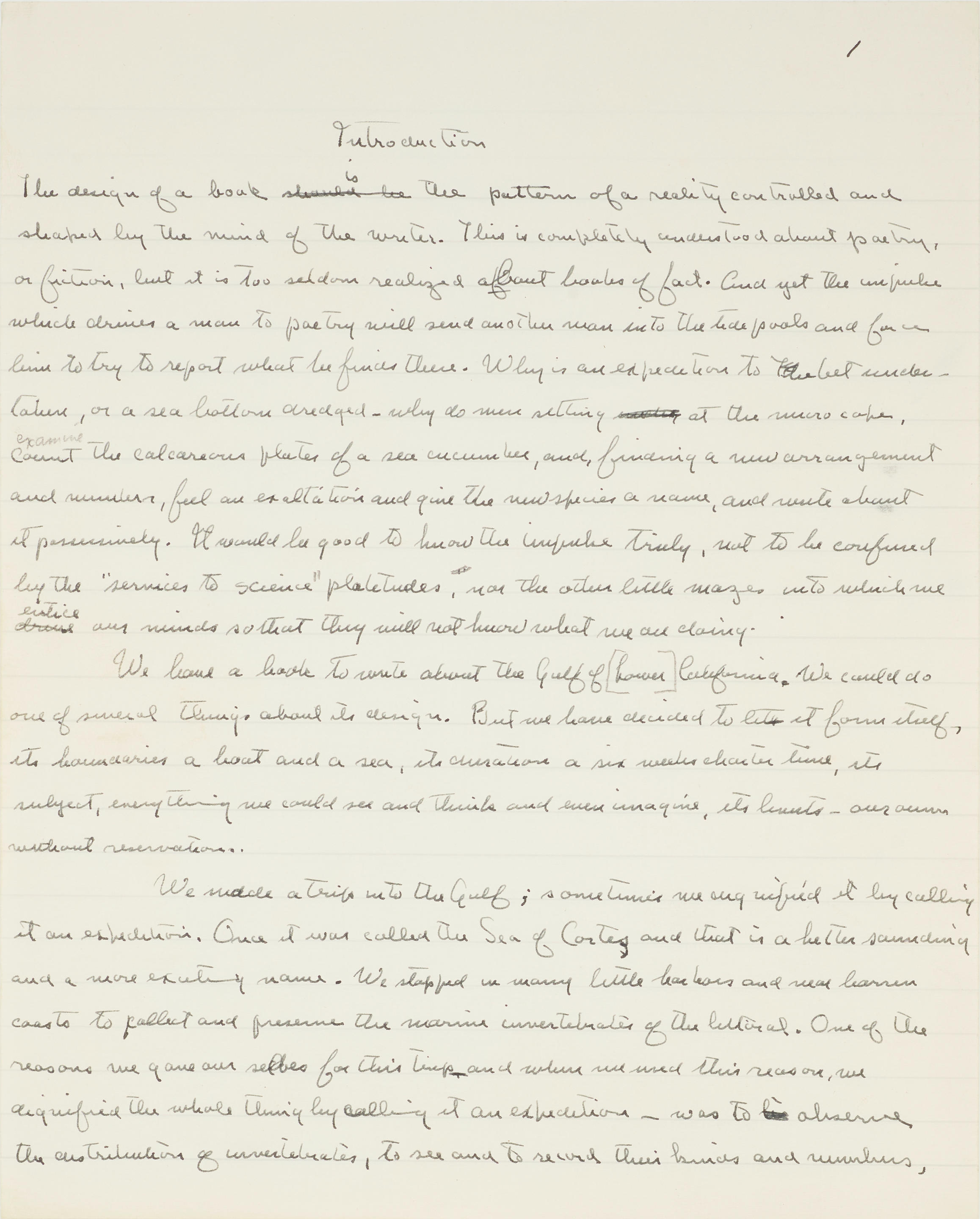


.jpg)

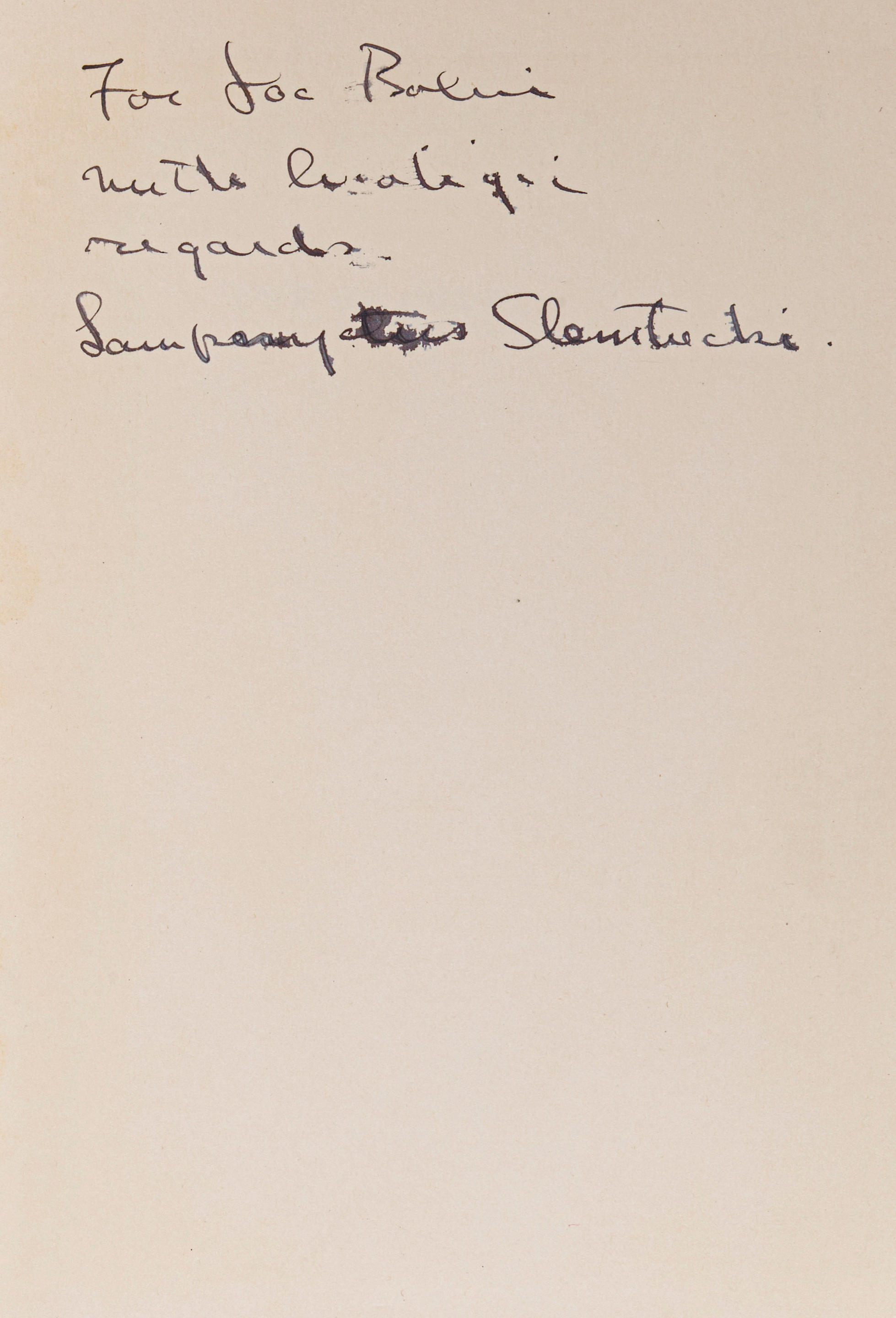
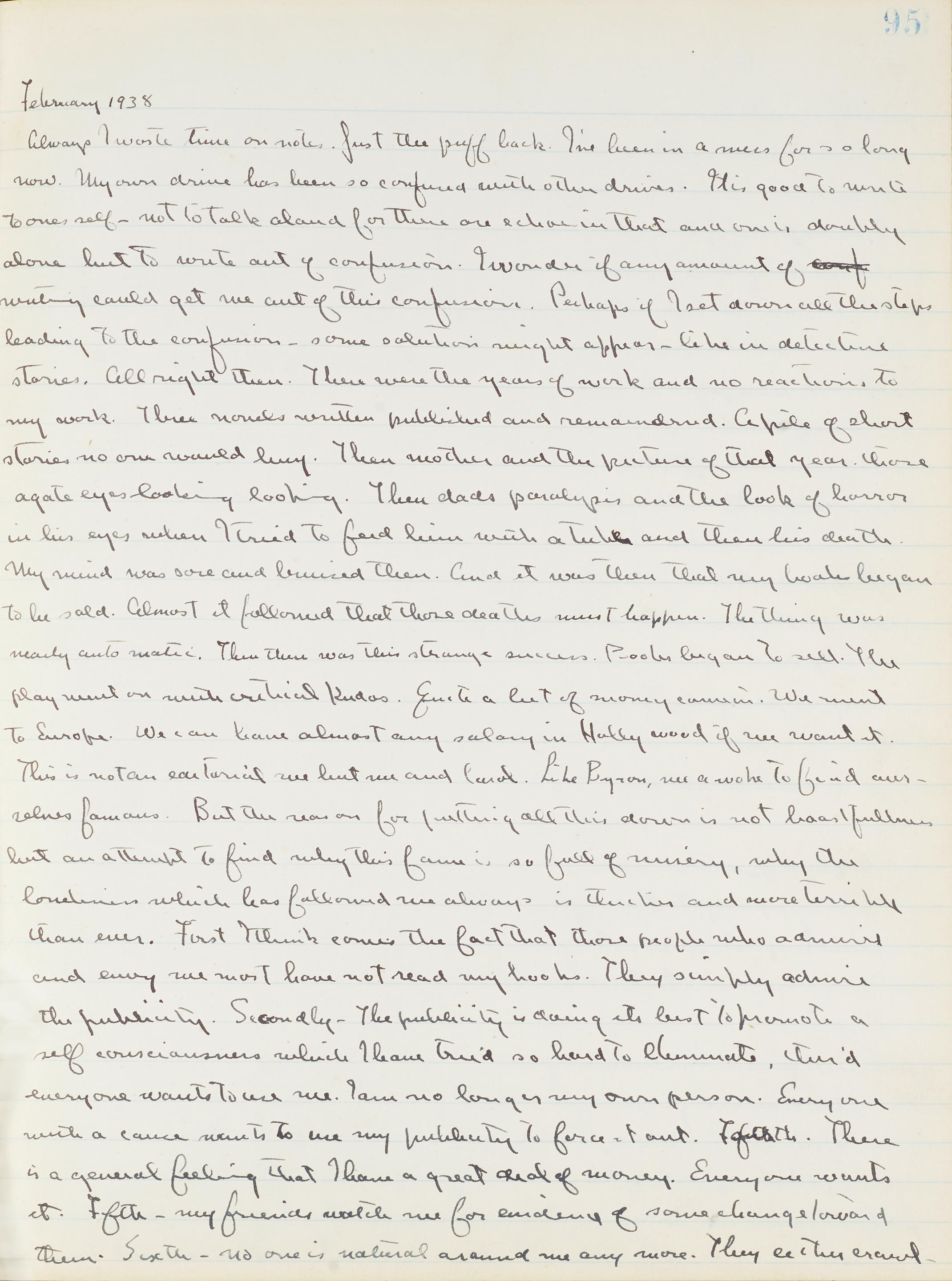
.jpg)
Testen Sie LotSearch und seine Premium-Features 7 Tage - ohne Kosten!
Lassen Sie sich automatisch über neue Objekte in kommenden Auktionen benachrichtigen.
Suchauftrag anlegen